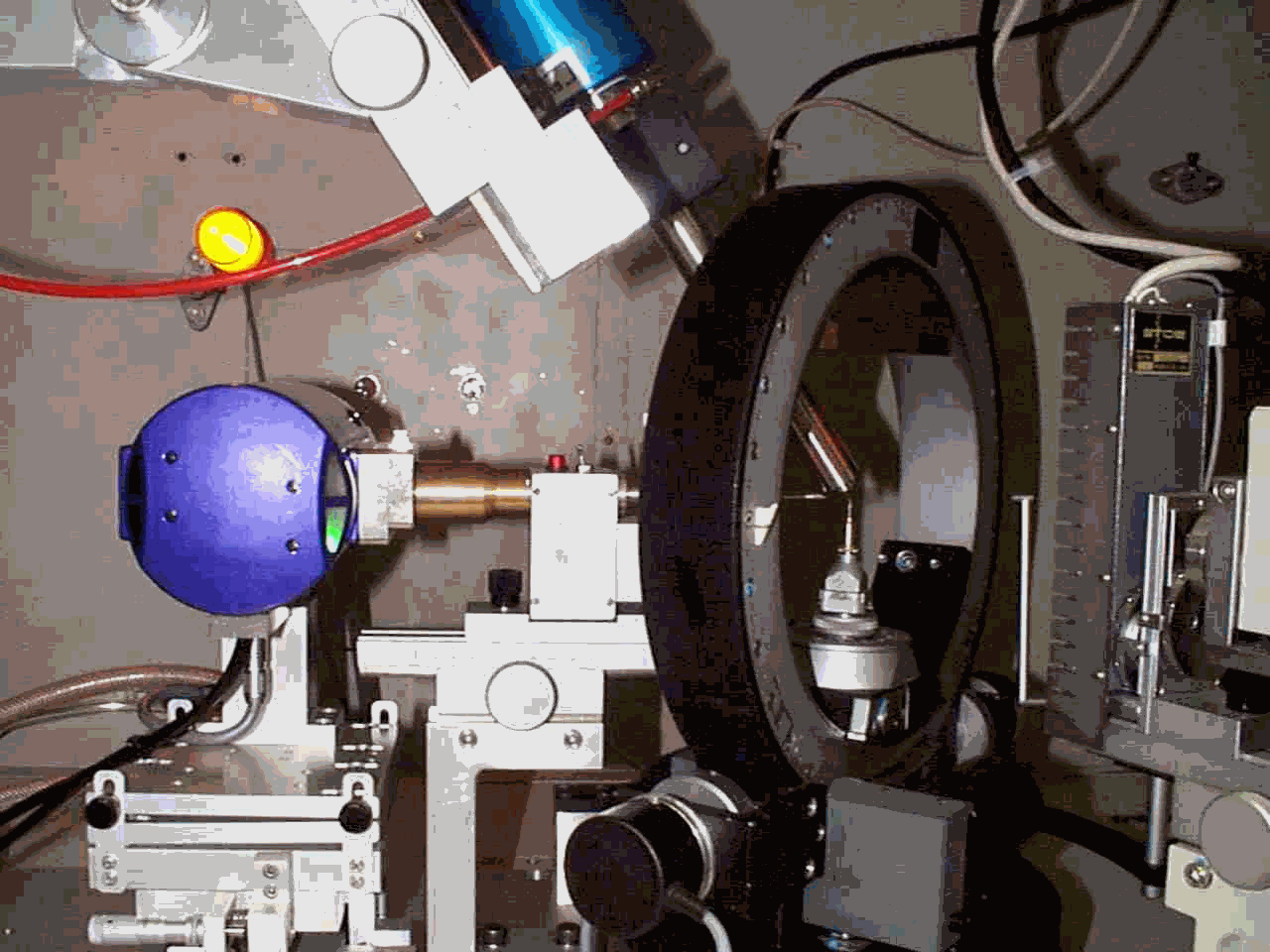
The development and exploitation of new X-ray generator technology in structural chemistry
William Clegg
Department of Chemistry, University of Newcastle upon Tyne
Final Report
June 2000
Summary
As proposed in the original grant application, a Microsource X-ray tube and generator supplied by Bede Scientific Instruments Ltd (and part funded by them under the JREI mechanism) has been installed on our four-circle diffractometer, as a replacement for a conventional sealed X-ray tube. Installation involved customisation, as this was the first use of the Microsource on such equipment. Modifications were made to the diffractometer housing, the shutter and collimator support assembly, and the positioning of ancillary equipment. A complete support and alignment table was designed and constructed for the Microsource in conjunction with Bede.
Operating parameters and alignment procedures for the equipment have been developed and optimised for this particular application. The result is a focused monochromatic beam of Cu-Ka X-rays of 300–500 microns cross-section at the sample, about one order of magnitude more intense than from the previous conventional source, but with a small fraction of the electrical power input (measured in tens of watts instead of kW) and with only minimal cooling water requirements. Mechanical and intensity stability of the source have been monitored and found to be entirely satisfactory. The possible impact of target deterioration in the tube on its expected lifetime has been investigated, and is found to be unlikely as the limiting factor.
Figure 1. The Microsource X-ray tube installed

In addition to standard test data sets collected from samples with known structure, to confirm the performance and reliability of the equipment, a programme of structural studies has begun, which will continue for years to come. Initial results have been obtained in a range of chemical projects, including medicinal chemistry, alkoxides and enolates of light metals, intermolecular interactions of rigid-rod molecules, precursors for alkene polymerisation catalysts, alkali metal complexes, and supramolecular studies of hydrogen bonding. In several cases, determination of absolute configuration is important for compounds containing no heavy atoms, and this has been reliably achieved on the basis of the small anomalous dispersion effects generated by oxygen atoms with Cu-Ka radiation; this is further demonstration of the satisfactory performance of the equipment.
The project has contributed to the technical development of the Microsource and its application in single-crystal diffraction for structural chemistry. The use of this equipment is likely to become widespread in the next few years, particularly as a cost-effective alternative to rotating anode X-ray sources, with which it directly competes in intensity terms.
Funding from EPSRC and Bede Scientific Instruments Ltd is gratefully acknowledged.
For further information on this work, contact